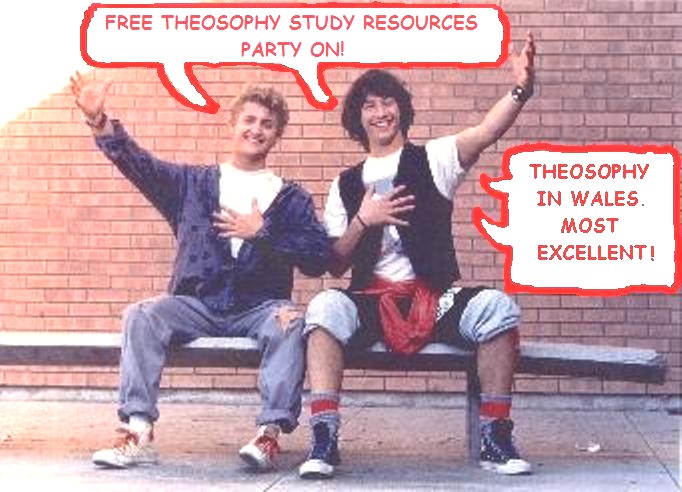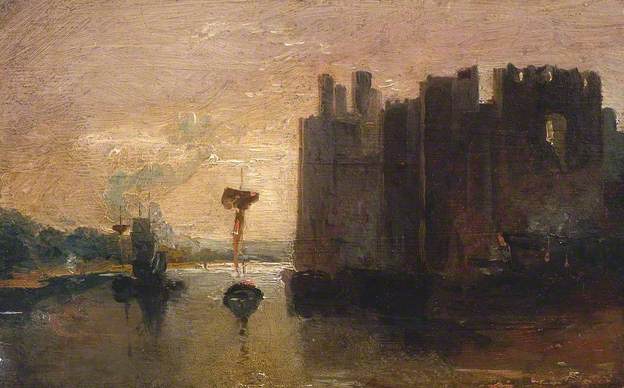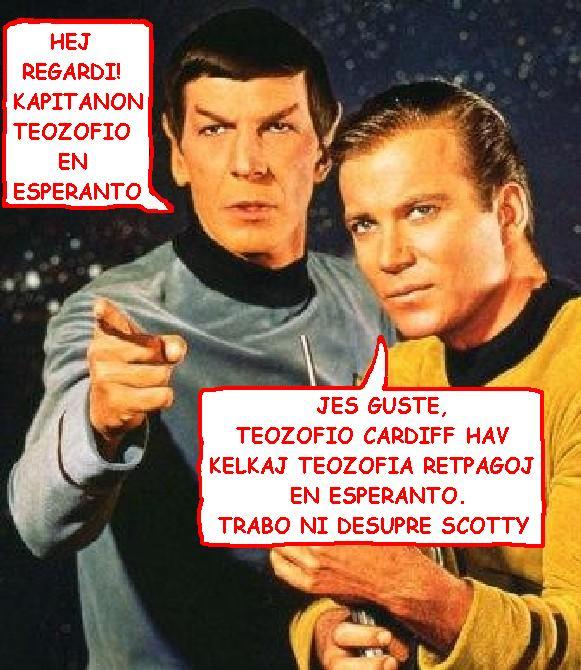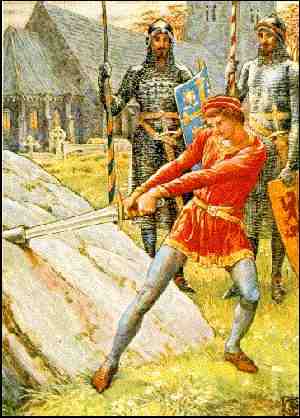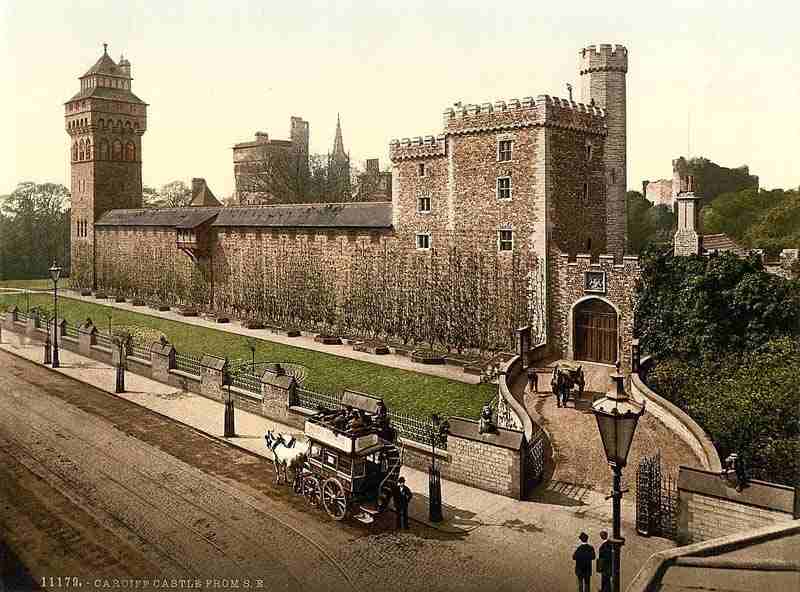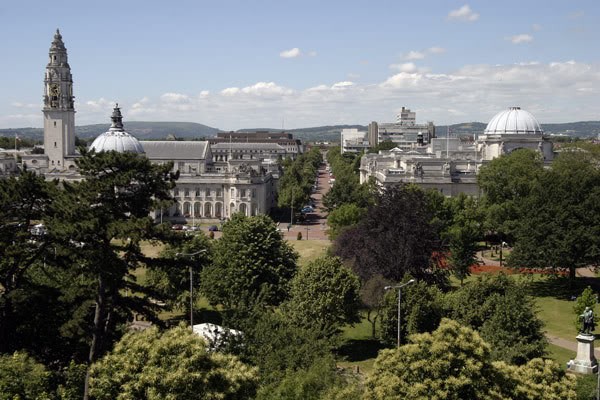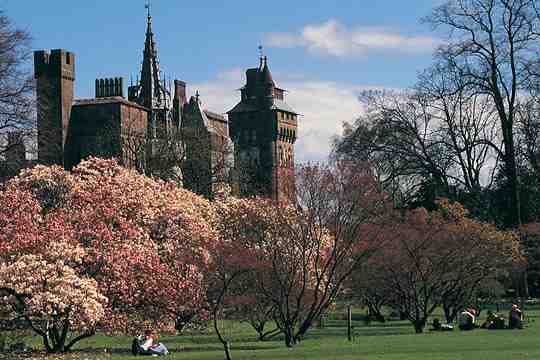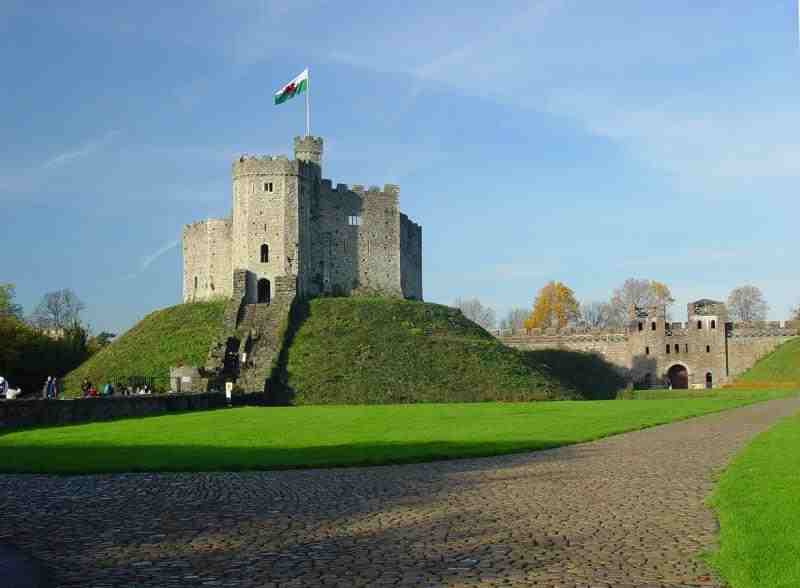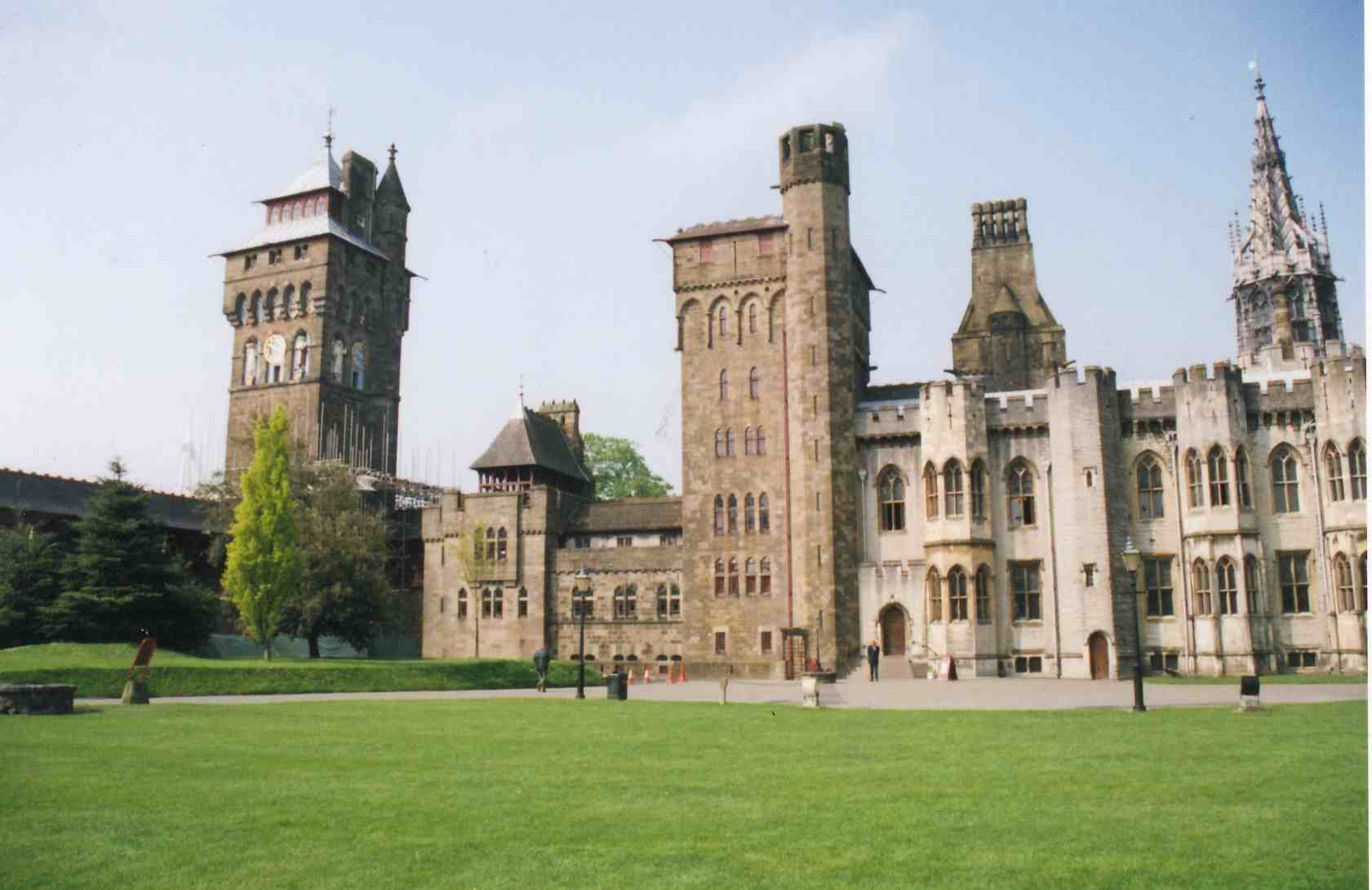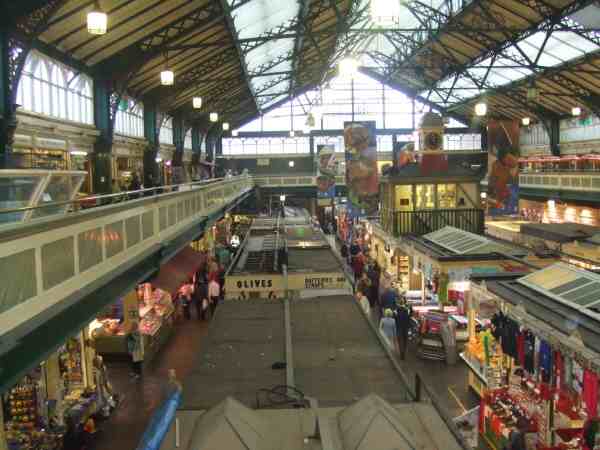THE
OF
THEOSOPHY
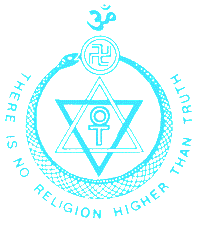
A Definitive Work on Theosophy
By
William Quan Judge
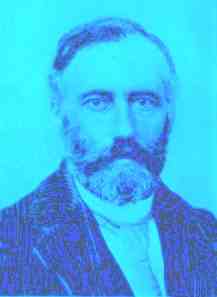
CHAPTER
6
Kama
– Desire
The author of Esoteric Buddhism -- which book ought to
be consulted by all students of Theosophy, since it was made from suggestions
given by some of the Adepts themselves -- gave the name Kama rupa to the fourth
principle of man's constitution. The reason was that the word Kama in the
Sanskrit language means "desire," and as the idea intended to be
conveyed was that the fourth principle was the "body or mass of desires
and passions," Mr. Sinnett added the Sanskrit word for body or form which
is Rupa, thus making the compound word Kamarupa.
I shall call it by the English equivalent -- passions
and desires -- because those terms exactly express its nature. And I do this
also in order to make the sharp issue which actually exists between the
psychology and mental philosophy of the west and those of the east. The west
divides man into intellect, will, and feeling, but it is not understood whether
the passions and desires constitute a
principle in themselves or are due entirely to the
body. Indeed, most people consider them as being the result of the influence of
the flesh, for they are designated often by the terms "desires of the
flesh" and "fleshly appetites."
The ancients, however, and the Theosophists know them
to be a principle in themselves and not merely the impulses from the body.
There is no help to be had in this matter from the western psychology, now in
its infancy and wholly devoid of knowledge about the inner, which is the
psychical, nature of man, and from this point there is the greatest divergence
between it and Theosophy.
The passions and desires are not produced by the body,
but, on the contrary, the body is caused to be by the former. It is desire and
passion which caused us to be born, and will bring us to birth again and again
in this body or in some other.* It is by passion and desire we are made to
evolve through the mansions
of death called lives on earth. It was by the arising
of desire in the unknown first cause, the one absolute existence, that the
whole collection of worlds was manifested, and by means of the influence of
desire in the now manifested world
is the latter kept in existence.
NOTE
[*W
Q Judge, in The Theosophical Forum,
June, 1894, page 12, corrected this to: "in some body on this earth or
another globe."]
This fourth principle is the balance principle of the
whole seven. It stands in the middle, and from it the ways go up or down. It is
the basis of action and the mover of the will. As the old Hermetists say:
"Behind will stands desire."
For whether we wish to do well or ill we have to first
arouse within us the desire for either course. The good man who at last becomes
even a sage had at one time in his many lives to arouse the desire for the
company of holy men and to keep his desire for progress alive in order to
continue on his way.
Even a Buddha or a Jesus had first to make a vow,
which is a desire, in some life, that he would save the world or some part of
it, and to persevere with the desire alive in his heart through countless
lives. And equally so, on the other hand, the bad man life after life took unto
himself low, selfish, wicked desires, thus
debasing instead of purifying this principle. On the
material and scientific side of occultism, the use of the inner hidden powers
of our nature, if this principle of desire be not strong the master power of
imagination cannot do its work, because though it makes a mould or matrix the
will cannot act unless it is moved, directed, and kept up to pitch by desire.
The desires and passions, therefore, have two aspects,
the one being low and the other high. The low is that shown by the constant
placing of the consciousness entirely below in the body and the astral body;
the high comes from the influence of and aspiration to the trinity above, of
Mind, Buddhi, and Spirit. This fourth principle is like the sign Libra in the
path of the Sun through the Zodiac; when the Sun (who is the real man) reaches
that sign he trembles in the balance. Should he go back the worlds would be
destroyed; he goes onward, and the whole human race is lifted up to perfection.
During life the emplacement of the desires and
passions is, as obtains with the astral body, throughout the entire lower man,
and like that ethereal counterpart of our physical person it may be added to or
diminished, made weak or increased in strength, debased or purified.
At death it informs the astral body, which then
becomes a mere shell; for when a man dies his astral body and principle of
passion and desire leave the physical in company and coalesce. It is then that
the term Kamarupa may be applied, as Kamarupa is really made of astral body and
Kama in conjunction, and this joining of the two makes a shape or form which
though ordinarily invisible is material and may be brought into
visibility. Although it is empty of mind and
conscience, it has powers of its own that can be exercised whenever the
conditions permit.
These conditions are furnished by the medium of the
spiritualists, and in every seance room the astral
shells of deceased persons are always present to delude the sitters, whose
powers of discrimination have been destroyed by wonderment.
It is the "devil" of the Hindus, and a worse
enemy the poor medium could not have. For the astral spook -- or Kamarupa -- is
but the mass of the desires and passions abandoned by the real person who has
fled to "heaven" and has no concern with the people left behind,
least of all with seances and mediums.
Hence, being devoid of the nobler soul, these desires
and passions work only on the very lowest part of the medium's nature and stir
up no good elements, but always the lower leanings of the being. Therefore it
is that even the
spiritualists themselves admit that in the ranks of
the mediums there is much fraud, and mediums have often confessed, "the
spirits did tempt me and I committed fraud at their wish."
This Kamarupa spook is also the enemy of our
civilization, which permits us to execute men for crimes committed and thus
throw out into the ether the mass of passion and desire free from the weight of
the body and liable at any moment to be attracted to any sensitive person.
Being thus attracted, the deplorable images of crimes committed and also the
picture of the execution and all the accompanying curses and wishes for revenge
are implanted in living persons, who, not seeing the evil, are unable to throw
it off. Thus crimes and new ideas of crimes are wilfully propagated every day
by those countries where capital
punishment prevails.
The astral shells together with the still living
astral body of the medium, helped by certain forces of nature which the
Theosophists call "elementals," produce nearly all the phenomena of
non-fraudulent spiritualism. The medium's
astral body having the power of extension and
extrusion forms the framework for what are called "materialized
spirits," makes objects move without physical contact, gives reports from
deceased relatives, none of them anything more than
recollections and pictures from the astral light, and
in all this using and being used by the shells of suicides, executed murderers,
and all such spooks as are naturally near to this plane of life. The number of
cases in which any communication comes from an actual spirit out of the body is
so small as to be
countable almost on one hand. But the spirits of
living men sometimes, while their bodies are asleep, come to seances and take
part therein.
But they cannot recollect it, do not know how they do
it, and are not distinguished by mediums from the mass of astral corpses. The
fact that such things can be done by the inner man and not be recollected
proves nothing against these theories, for the
child can see without knowing how the eye acts, and
the savage who has no knowledge of the complex machinery working in his body
still carries on the process of digestion perfectly. And that the latter is
unconscious with him is exactly in line with the theory, for these acts and
doings of the inner man are the unconscious actions of the subconscious mind.
These words "conscious" and
"subconscious" are of course used relatively, the unconsciousness
being that of the brain only. And hypnotic experiments have conclusively proved
all these theories, as on one day not far away will be fully admitted. Besides
this, the astral shells of suicides and executed criminals are the most
coherent, longest lived, and nearest to us of all the shades of hades, and
hence must, out of the necessity of the case, be the real "controls"
of the seance room.
Passion and desire together with astral model-body are
common to men and animals, as also to the vegetable kingdom, though in the last
but faintly developed. And at one period in evolution no further material
principles had been developed, and all the three higher, of Mind, Soul, and
Spirit, were but latent. Up to this point man and animal were equal, for the
brute in us is made
of the passions and the astral body. The development
of the germs of Mind made man because it constituted the great differentiation.
The God within begins with Manas or mind, and it is the struggle between this
God and the brute below which Theosophy speaks of and warns about. The lower
principle is called bad because by comparison with the higher it is so, but
still it is the basis of action.
We cannot rise unless self first asserts itself in the
desire to do better. In this aspect it is called rajas or the active and bad
quality, as distinguished from tamas, or the quality of darkness and
indifference. Rising is not possible unless rajas is present to give the
impulse, and by the use of this principle of passion all the higher qualities
are brought to at last so refine and elevate our desires that they may be
continually placed upon truth and spirit. By this Theosophy does not teach that
the passions are to be pandered to or satiated, for a more pernicious doctrine
was never taught, but the injunction is to make use of the activity given by
the fourth principle so as to ever rise and not to fall under the dominion of
the dark quality that ends with annihilation, after having begun in selfishness
and indifference.
Having thus gone over the field and shown what are the
lower principles, we find Theosophy teaching that at the present point of man's
evolution he is a fully developed quaternary with the higher principles partly
developed. Hence it is taught that today man shows himself to be moved by
passion and desire. This is
proved by a glance at the civilizations of the earth,
for they are all moved by this principle, and in countries like France,
England, and America a glorification of it is exhibited in the attention to
display, to sensuous art, to struggle for power and place, and in all the
habits and modes of living where the gratification of the senses is sometimes
esteemed the highest good.
But as Mind is being evolved more and more as we
proceed in our course along the line of the race development, there can be
perceived underneath in all countries the beginning of the transition from the
animal possessed of the germ of real mind
to the man of mind complete. This day is therefore
known to the Masters, who have given out some of the old truths, as the
"transition period." Proud science and prouder religion do not admit
this, but think we are as we always will be.
But believing in his teacher, the theosophist sees all
around him the evidence that the race mind is changing by enlargement, that the
old days of dogmatism are gone and the "age of inquiry" has come,
that the inquiries will grow louder year by year and the answers be required to
satisfy the mind as it grows more
and more, until at last, all dogmatism being ended,
the race will be ready to face all problems, each man for himself, all working
for the good of the whole, and that the end will be the perfecting of those who
struggle to overcome the brute. For these reasons the old doctrines are given
out again, and Theosophy asks every one to reflect whether to give way to the
animal below or look up to and be governed by the God within.
A fuller treatment of the fourth principle of our
constitution would compel us to consider all such questions as those presented
by the wonder workers of the east, by spiritualistic phenomena, hypnotism,
apparitions, insanity, and the
like, but they must
be reserved for separate handling.
______________________
THE
OF
THEOSOPHY

Find out more about
Theosophy with these links

The Cardiff Theosophical Society Website
The
National Wales Theosophy Website
If you run a Theosophy Group, please feel free
to use any of the material on this site
The Most Basic Theosophy
Website in the Universe
A quick overview of Theosophy
and the Theosophical Society
If you run a Theosophy Group you
can use this as an introductory handout.
Theosophy Cardiff’s Instant Guide
One liners and quick explanations
H P Blavatsky is
usually the only
Theosophist that
most people have ever
heard of. Let’s
put that right
Theosophy Cardiff Nirvana Pages
The Voice of the Silence Website
An Independent Theosophical Republic
Links to Free Online Theosophy
Study Resources; Courses, Writings,
The main criteria
for the inclusion of
links on this
site is that they have some
relationship
(however tenuous) to Theosophy
and are
lightweight, amusing or entertaining.
Topics include
Quantum Theory and Socks,
Dick Dastardly and Legendary Blues Singers.
A selection of
articles on Reincarnation
Provided in
response to the large
number of
enquiries we receive at
Cardiff
Theosophical Society on this subject
The Voice of the Silence Website
Caernarvon Castle,
North Wales. circa 1798
Joseph Mallord
William Turner (1775‑1851)
This is for
everyone, you don’t have to live
in Wales to
make good use of this Website
The Seven
Principles of Man
By
Annie Besant
No
Aardvarks were harmed in the
The Spiritual Home of Urban Theosophy
The Earth Base for Evolutionary Theosophy
Reincarnation
This guide has been included in response
to the number of enquiries we receive on this
subject at Cardiff
Theosophical Society
From A Textbook
of Theosophy By C W Leadbeater
How We Remember our Past Lives
Life after Death & Reincarnation
The Slaughter of the
a great demand by the public for lectures on
Reincarnation
Classic Introductory Theosophy Text
A Text Book of Theosophy By C
What Theosophy Is From the Absolute to Man
The Formation of a Solar System The Evolution of Life
The Constitution of Man After Death
Reincarnation
The Purpose of Life The Planetary Chains
The Result of Theosophical Study
The Occult World
By
Alfred Percy
Sinnett
The Occult
World is an treatise on the
Occult and
Occult Phenomena, presented
in readable style, by an early giant of
the
Theosophical Movement.
Preface to the American Edition Introduction
Occultism and its Adepts The Theosophical Society
First Occult Experiences Teachings of Occult Philosophy
Later Occult Phenomena Appendix
by
Annie Besant
THE PHYSICAL PLANE THE ASTRAL PLANE
KÂMALOKA THE MENTAL PLANE DEVACHAN
THE BUDDHIC AND NIRVANIC PLANES
THE THREE KINDS OF KARMA COLLECTIVE KARMA
THE LAW OF SACRIFICE MAN'S
ASCENT
______________________
Annie Besant Visits Cardiff 1924
The Theosophy Cardiff Nirvana Pages
National Wales Centre for Theosophy
Blavatsky Wales Theosophy Group
______________________
_______________________
Theosophy Cardiff Cancels its Affiliation
to the Adyar Based Theosophical Society
and becomes an independent body within
the Worldwide Theosophical Movement
Theosophy Birmingham (England)
The Birmingham Annie Besant Lodge
Theosophy Cardiff has links with the
__________________
The Theosophy Cardiff
Glastonbury Pages
The Theosophy Cardiff Guide to
The Theosophy Cardiff Guide to
The Theosophy Cardiff Guide to
The Terraced Maze of Glastonbury Tor
Glastonbury and
Joseph of Arimathea
The Grave of King Arthur & Guinevere
Views of Glastonbury High Street
The Theosophy Cardiff Guide to
__________________
Camberley, Surrey,
England GU15 2LF
Concerns about
the fate of the wildlife as
Tekels Park is to
be Sold to a Developer
Concerns are
raised about the fate of the
wildlife as The Spiritual
Retreat,
Tekels Park in
Camberley, Surrey,
England is to be
sold to a developer.
Tekels Park is a
50 acre woodland park,
purchased
for the Adyar
Theosophical
In addition to
concern about the park,
many are worried about the
future
of the Tekels
Park Deer as they
Confusion as the Theoversity moves
out of
Tekels Park to Southampton,
Glastonbury &
Chorley in Lancashire while the
leadership claim
that the Theosophical Society will
carry on using
Tekels Park despite its sale to a developer
Anyone planning a
“Spiritual” stay at the
Tekels Park Guest
House should be aware of the sale.
Future of Tekels Park Badgers in Doubt
Party On! Tekels Park Theosophy NOT
Tekels Park & the Loch Ness Monster
A Satirical view of
the sale of Tekels Park
in Camberley,
Surrey to a developer
The Toff’s Guide to the Sale of Tekels Park
What the men in
top hats have to
say about the
sale of Tekels Park
__________________________
An Outline of Theosophy
Charles Webster Leadbeater
Theosophy - What it is How is it Known?
The Method of Observation General Principles
The Three Great Truths Advantage Gained from this Knowledge
The Deity
The Divine Scheme The Constitution of Man
The True Man
Reincarnation
The Wider Outlook
Death Man’s Past and Future Cause and Effect
______________________________
A B C D EFG H IJ KL M N OP QR S T UV WXYZ
Complete Theosophical Glossary in Plain Text Format
1.22MB
Quick Explanations with Links to More Detailed Info
What is Theosophy ? Theosophy Defined (More Detail)
Three Fundamental Propositions Key Concepts of Theosophy
Cosmogenesis Anthropogenesis Root Races
Ascended Masters After Death States
The Seven Principles of Man Karma
Reincarnation Helena Petrovna Blavatsky
Colonel Henry Steel Olcott William Quan Judge
The Start of the Theosophical
Society
History of the Theosophical
Society
Theosophical Society Presidents
History of the Theosophical
Society in Wales
The Three Objectives of the
Theosophical Society
Explanation of the Theosophical
Society Emblem
The Theosophical Order of
Service (TOS)
Glossaries of Theosophical Terms
Index of Searchable
Full Text Versions of
Definitive
Theosophical Works
H P Blavatsky’s Secret Doctrine
Isis Unveiled by H P Blavatsky
H P Blavatsky’s Esoteric Glossary
Mahatma Letters to A P Sinnett 1 - 25
A Modern Revival of Ancient Wisdom
(Selection of Articles by H P Blavatsky)
The Secret Doctrine – Volume 3
A compilation of H P Blavatsky’s
writings published after her death
Esoteric Christianity or the Lesser Mysteries
The Early Teachings of The Masters
A Collection of Fugitive Fragments
Fundamentals of the Esoteric Philosophy
Mystical,
Philosophical, Theosophical, Historical
and Scientific
Essays Selected from "The Theosophist"
Edited by George Robert Stow Mead
From Talks on the Path of Occultism - Vol. II
In the Twilight”
Series of Articles
The In the Twilight”
series appeared during
1898 in The
Theosophical Review and
from 1909-1913 in The Theosophist.
compiled from
information supplied by
her relatives and friends and edited by A P Sinnett
Letters and
Talks on Theosophy and the Theosophical Life
Obras Teosoficas En Espanol
Theosophische Schriften Auf Deutsch
An Outstanding
Introduction to Theosophy
By a student of
Katherine Tingley
Elementary Theosophy Who is the Man? Body and Soul
Body, Soul and Spirit Reincarnation Karma
Nature is infinite in space and time --
boundless and eternal, unfathomable and ineffable. The all-pervading essence of
infinite nature can be called space, consciousness, life, substance, force,
energy, divinity -- all of which are fundamentally one.
2) The finite and the infinite
Nature is a unity in diversity, one in
essence, manifold in form. The infinite whole is composed of an infinite number
of finite wholes -- the relatively stable and autonomous things (natural
systems or artefacts) that we observe around us. Every natural system is not
only a conscious, living, substantial entity, but is
consciousness-life-substance, of a particular range of density and form.
Infinite nature is an abstraction, not an entity; it therefore does not act or
change and has no attributes. The finite, concrete systems of which it is
composed, on the other hand, move and change, act and interact, and possess
attributes. They are composite, inhomogeneous, and ultimately transient.
3) Vibration/worlds within worlds
The one essence manifests not only in
infinitely varied forms, and on infinitely varied scales, but also in
infinitely varying degrees of spirituality and substantiality, comprising an
infinite spectrum of vibration or density. There is therefore an endless series
of interpenetrating, interacting worlds within worlds, systems within systems.
The energy-substances of higher planes or
subplanes (a plane being a particular range of vibration) are relatively more
homogeneous and less differentiated than those of lower planes or subplanes.
Just as boundless space is comprised of
endless finite units of space, so eternal duration is comprised of endless
finite units of time. Space is the infinite totality of worlds within worlds,
but appears predominantly empty because only a tiny fraction of the
energy-substances composing it are perceptible and tangible to an entity at any
particular moment. Time is a concept we use to quantify the rate at which
events occur; it is a function of
change and motion, and presupposes a
succession of cause and effect. Every entity is extended in space and changes
'in time'.
All change (of position, substance, or
form) is the result of causes; there is no such thing as absolute chance.
Nothing can happen for no reason at all for nothing exists in isolation;
everything is part of an intricate web of causal interconnections and
interactions. The keynote of nature is harmony: every action is automatically
followed by an equal and opposite reaction, which sooner or later rebounds upon
the originator of the initial act. Thus, all our thoughts and deeds will
eventually bring us 'fortune' or 'misfortune' according to the degree to which
they were harmonious or disharmonious. In the long term, perfect justice
prevails in nature.
Because nature is fundamentally one, and
the same basic habits and structural, geometric, and evolutionary principles
apply throughout, there are correspondences between microcosm and macrocosm.
The principle of analogy -- as above, so below -- is a vital tool in our
efforts to understand reality.
All finite systems and their attributes are
relative. For any entity, energy-substances vibrating within the same range of
frequencies as its outer body are 'physical' matter, and finer grades of
substance are what we call energy, force, thought, desire, mind, spirit,
consciousness, but these are just as material to entities on the corresponding
planes as our physical world is to us. Distance and time units are also
relative: an atom is a solar system on its own scale, reembodying perhaps
millions of times in what for us is one second, and our whole galaxy may be a
molecule in some supercosmic entity, for which a million of our years is just a
second. The range of scale is infinite: matter-consciousness is both infinitely
divisible and infinitely aggregative.
All natural systems consist of smaller
systems and form part of larger systems. Hierarchies extend both 'horizontally'
(on the same plane) and 'vertically' or inwardly (to higher and lower planes).
On the horizontal level, subatomic particles form atoms, which combine into
molecules, which arrange themselves into cells, which form tissues and organs,
which form part of organisms, which form part of ecosystems, which form part of
planets, solar systems, galaxies, etc. The constitution of worlds and of the
organisms that inhabit them form 'vertical' hierarchies, and can be divided
into several interpenetrating layers or elements, from physical-astral to
psychomental to spiritual-divine, each of which can be further divided.
The human constitution can be divided up in
several different ways: e.g. into a trinity of body, soul, and spirit; or into
7 'principles' -- a lower quaternary consisting of physical body, astral
model-body, life-energy, and lower thoughts and desires, and an upper triad
consisting of higher mind (reincarnating ego), spiritual intuition, and inner
god. A planet or star can be regarded as a 'chain' of 12 globes, existing on 7
planes, each globe comprising several subplanes.
The highest part of every multilevelled
organism or hierarchy is its spiritual summit or 'absolute', meaning a
collective entity or 'deity' which is relatively perfected in relation to the
hierarchy in question. But the most 'spiritual' pole of one hierarchy is the
most 'material' pole of the next, superior hierarchy, just as the lowest pole
of one hierarchy is the highest pole of the one below.
Each level of a hierarchical system
exercises a formative and organizing influence on the lower levels (through the
patterns and prototypes stored up from past cycles of activity), while the
lower levels in turn react upon the higher. A system is therefore formed and
organized mainly from within outwards, from the inner levels of its
constitution, which are relatively more enduring and developed than the outer
levels. This inner guidance is sometimes active and selfconscious, as in our
acts of free will (constrained, however, by karmic tendencies from the past),
and sometimes it is automatic and passive, giving rise to our own automatic
bodily functions and habitual and instinctual behavior, and to the orderly,
lawlike operations of nature in general. The 'laws' of nature are therefore the
habits of the various grades of conscious entities that compose reality,
ranging from higher intelligences
(collectively forming the universal mind) to elemental nature-forces.
10) Consciousness and its vehicles
The core of every entity -- whether atom,
human, planet, or star -- is a monad, a unit of consciousness-life-substance,
which acts through a series of more material vehicles or bodies. The monad or
self in which the consciousness of a particular organism is focused is animated
by higher monads and expresses itself through a series of lesser monads, each
of which is the nucleus of one of the lower vehicles of the entity in question.
The following monads can be distinguished: the divine or galactic monad, the
spiritual or solar monad, the higher human or planetary-chain monad, the lower
human or globe monad, and the animal, vital-astral, and physical monads. At our
present stage of evolution, we are essentially the lower human monad, and our
task is to raise our consciousness from the animal-human to the spiritual-human
level of it.
Evolution means the unfolding, the bringing
into active manifestation, of latent powers and faculties 'involved' in a
previous cycle of evolution. It is the building of ever fitter vehicles for the
expression of the mental and spiritual powers of the monad. The more
sophisticated the lower vehicles of an entity, the greater their ability to
express the powers locked up in the higher levels of its constitution. Thus all
things are alive and conscious, but the degree of manifest life and
consciousness is extremely varied.
Evolution results from the interplay of
inner impulses and environmental stimuli. Ever building on and modifying the
patterns of the past, nature is infinitely creative.
12) Cyclic evolution/re-embodiment
Cyclic evolution is a fundamental habit of
nature. A period of evolutionary activity is followed by a period of rest. All
natural systems evolve through re-embodiment. Entities are born from a seed or
nucleus remaining from the previous evolutionary cycle of the monad, develop to
maturity, grow old, and pass away, only to re-embody in a new form after a
period of rest. Each new embodiment is the product of past karma and present
choices.
Nothing comes from nothing: matter and
energy can be neither created nor destroyed, but only transformed. Everything
evolves from preexisting material. The growth of the body of an organism is
initiated on inner planes, and involves the transformation of higher
energy-substances into lower, more material ones, together with the attraction
of matter from the environment.
When an organism has exhausted the store of
vital energy with which it is born, the coordinating force of the indwelling
monad is withdrawn, and the organism 'dies', i.e. falls apart as a unit, and
its constituent components go their separate ways. The lower vehicles decompose
on their respective subplanes, while, in the case of humans, the reincarnating
ego enters a dreamlike state of rest and assimilates the experiences of the
previous incarnation. When the time comes for the next embodiment, the
reincarnating ego clothes itself in many of the same atoms of different grades
that it had used previously, bearing the appropriate karmic impress. The same
basic processes of birth, death, and
rebirth apply to all entities, from atoms to humans to stars.
14) Evolution and involution of worlds
Worlds or spheres, such as planets and
stars, are composed of, and provide the field for the evolution of, 10 kingdoms
-- 3 elemental kingdoms, mineral, plant, animal, and human kingdoms, and 3
spiritual kingdoms. The impulse for a new manifestation of a world issues from
its spiritual summit or hierarch, from which emanate a series of steadily
denser globes or planes; the One expands into the many. During the first half
of the evolutionary cycle (the arc of descent) the energy-substances of each
plane materialize or condense, while during the second half (the arc of ascent)
the trend is towards dematerialization or etherealization, as globes and
entities are reabsorbed into the spiritual hierarch for a period of nirvanic
rest. The descending arc is characterized by the evolution of matter and
involution of spirit, while the ascending arc is characterized by the evolution
of spirit and involution of matter.
In each grand cycle of evolution,
comprising many planetary embodiments, a monad begins as an unselfconsciousness
god-spark, embodies in every kingdom of nature for the purpose of gaining
experience and unfolding its inherent faculties, and ends the cycle as a self
conscious god. Elementals ('baby monads') have no free choice, but
automatically act in harmony with one another and the rest of nature. In each
successive kingdom differentiation and individuality increase, and reach their
peak in the human kingdom with the attainment of selfconsciousness and a large
measure of free will.
In the human kingdom in particular,
self-directed evolution comes into its own. There is no superior power granting
privileges or handing out favours; we evolve according to our karmic merits and
demerits. As we progress through the spiritual kingdoms we become increasingly
at one again with nature, and willingly 'sacrifice' our circumscribed
selfconscious freedoms (especially the freedom to 'do our own thing') in order
to work in peace and harmony with the greater whole of which we form an
integral part. The highest gods of one hierarchy or world-system begin as
elementals in the next. The matter of any plane is composed of aggregated,
crystallized monads in their nirvanic sleep, and the spiritual and divine
entities embodied as planets and stars are the electrons and atomic nuclei --
the material building blocks -- of worlds on even larger scales. Evolution is
without beginning and without end, an endless adventure through the fields of
infinitude, in which there are always new worlds of experience in which to
become selfconscious masters of life.
There is no absolute separateness in
nature. All things are made of the same essence, have the same spiritual-divine
potential, and are interlinked by magnetic ties of sympathy. It is impossible
to realize our full potential, unless we recognize the spiritual unity of all
living beings and make universal brotherhood the keynote of our lives.
Hey Look!
Theosophy in Cardiff
Guide to the
Theosophy Wales King Arthur Pages
Arthur draws the Sword from the Stone
The Knights of The Round Table
The Roman Amphitheatre at Caerleon,
Eamont Bridge, Nr Penrith, Cumbria, England.
Geoffrey of Monmouth
(History of the Kings of Britain)
The reliabilty of this work has long been a subject of
debate but it is the first definitive account of Arthur’s
Reign
and one which puts Arthur in a historcal context.
and his version’s political agenda
According to Geoffrey of Monmouth
The first written mention of Arthur as a heroic figure
The British leader who fought twelve battles
King Arthur’s ninth victory at
The Battle of the City of the Legion
King Arthur ambushes an advancing Saxon
army then defeats them at Liddington Castle,
Badbury, Near Swindon, Wiltshire, England.
King Arthur’s twelfth and last victory against the Saxons
Traditionally Arthur’s last battle in which he was
mortally wounded although his side went on to win
No contemporary writings or accounts of his life
but he is placed 50 to 100 years after the accepted
King Arthur period. He refers to Arthur in his inspiring
poems but the earliest written record of these dates
from over three hundred years after Taliesin’s death.
Pendragon Castle
Mallerstang Valley, Nr Kirkby Stephen,
A 12th Century Norman ruin on the site of what is
reputed to have been a stronghold of Uther Pendragon
From
wise child with no earthly father to
Megastar
of Arthurian Legend
History of the Kings of Britain
Drawn from the Stone or received from the Lady of the Lake.
Sir Thomas Malory’s Le Morte d’Arthur has both versions
with both swords called Excalibur. Other versions
5th & 6th Century Timeline of Britain
From the departure of the Romans from
Britain to the establishment of sizeable
Anglo-Saxon Kingdoms
Glossary of
Arthur’s uncle:- The puppet ruler of the Britons
controlled and eventually killed by Vortigern
Amesbury, Wiltshire, England. Circa 450CE
An alleged massacre of Celtic Nobility by the Saxons
History of the Kings of Britain
Athrwys / Arthrwys
King of Ergyng
Circa 618 - 655 CE
Latin: Artorius; English: Arthur
A warrior King born in Gwent and associated with
Caerleon, a possible Camelot. Although over 100 years
later that the accepted Arthur period, the exploits of
Athrwys may have contributed to the King Arthur Legend.
He became King of Ergyng, a kingdom between
Gwent and Brycheiniog (Brecon)
Angles under Ida seized the Celtic Kingdom of
Bernaccia in North East England in 547 CE forcing
Although much later than the accepted King Arthur
period, the events of Morgan Bulc’s 50 year campaign
to regain his kingdom may have contributed to
Old Welsh: Guorthigirn;
Anglo-Saxon: Wyrtgeorn;
Breton: Gurthiern; Modern Welsh; Gwrtheyrn;
*********************************
An earlier ruler than King Arthur and not a heroic figure.
He is credited with policies that weakened Celtic Britain
to a point from which it never recovered.
Although there are no contemporary accounts of
his rule, there is more written evidence for his
existence than of King Arthur.
How Sir Lancelot slew two giants,
From Sir Thomas Malory’s Le Morte d’Arthur
How Sir Lancelot rode disguised
in Sir Kay's harness, and how he
From Sir Thomas Malory’s Le Morte d’Arthur
How Sir Lancelot jousted against
four knights of the Round Table,
From Sir Thomas Malory’s Le Morte d’Arthur
Try these if you are looking for a local
Theosophy Group or Centre
UK Listing of Theosophical Groups
Cardiff
Theosophical Society in Wales
Cardiff, Wales, UK. CF24 – 1DL
_____________________________
Cardiff Picture Gallery
Cardiff
Millennium Stadium
The Hayes Cafe
Outside Cardiff Castle Circa 1890
Church Street
Cardiff View
Royal
The Original
Norman Castle which stands inside
the Grounds of
the later
Inside the
Grounds at
Cardiff Street
Entertainment
Cardiff Indoor
Market
Cardiff
Theosophical Society in Wales
